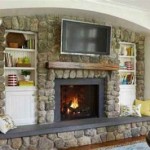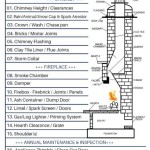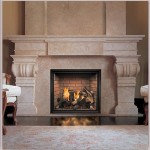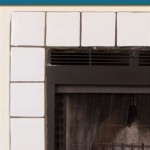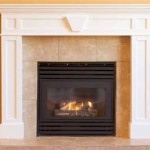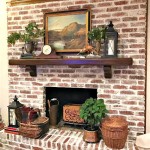Corner Propane Fireplace: A Comprehensive Guide
Corner propane fireplaces offer a compelling solution for homeowners seeking the ambiance of a traditional fireplace without the complexities and limitations associated with wood-burning models. They provide a convenient, efficient, and aesthetically pleasing heating option, particularly well-suited for spaces where maximizing floor space is a priority. This article provides a detailed exposition of corner propane fireplaces, covering their advantages, installation considerations, maintenance requirements, and safety aspects.
Propane fireplaces, in general, operate by burning propane gas to generate heat and produce realistic-looking flames. Corner models are specifically designed to fit snugly into the corner of a room, making them an ideal choice for smaller spaces or for rooms where a central fireplace isn't feasible. They can be installed in existing homes with relatively minimal renovation compared to traditional fireplaces.
The appeal of a corner propane fireplace extends beyond its space-saving design. They offer precise temperature control, ease of operation, and reduced maintenance compared to wood-burning alternatives. Additionally, propane is a readily available and relatively clean-burning fuel source, making it an attractive option for environmentally conscious homeowners.
Key Advantages of Corner Propane Fireplaces
Corner propane fireplaces offer several distinct advantages that contribute to their growing popularity among homeowners. These advantages range from space optimization to ease of use and environmental considerations.
Firstly, space efficiency is a primary benefit. The corner design allows the fireplace to occupy an otherwise underutilized area of a room. This is particularly advantageous in smaller living rooms, bedrooms, or dens where maximizing floor space is crucial. The angled design also visually opens up the room, creating a more spacious and inviting atmosphere.
Secondly, convenience and ease of use are significant selling points. Unlike wood-burning fireplaces, propane models require no wood gathering, stacking, or ash removal. They typically feature push-button ignition systems and adjustable flame controls, allowing for precise temperature regulation and instant on/off functionality. This eliminates the need to constantly tend to the fire, providing a more convenient and hands-off heating experience.
Thirdly, propane fireplaces offer superior heating efficiency. They convert a higher percentage of fuel into usable heat compared to traditional wood-burning fireplaces. This results in lower energy costs and a more comfortable and consistently warm environment. Many models also feature thermostatic controls, which automatically adjust the flame to maintain a consistent room temperature.
Finally, corner propane fireplaces contribute to improved indoor air quality. Propane is a clean-burning fuel that produces significantly fewer emissions than wood. This reduces the amount of smoke, soot, and other pollutants released into the air, creating a healthier and more comfortable living environment. They are also often ventless which further increases efficiency, though vented options are also available.
Installation Considerations for Corner Propane Fireplaces
Proper installation is crucial for ensuring the safe and efficient operation of a corner propane fireplace. The installation process typically involves several key steps, including site preparation, gas line connection, venting (if applicable), and finishing.
Site preparation is the first step and involves ensuring that the corner where the fireplace will be installed is structurally sound and capable of supporting its weight. It is essential to verify that the floor is level and that there are no obstructions, such as electrical wiring or plumbing, in the area. The surrounding wall surfaces should also be fire-resistant to prevent any potential fire hazards.
Connecting the gas line requires the expertise of a licensed gas fitter or plumber. It is imperative to ensure that the gas line is properly sized and installed according to local building codes. A gas shut-off valve should be installed near the fireplace for easy access in case of emergencies. Leak testing is also essential after the gas line is connected to ensure there are no gas leaks.
Venting requirements vary depending on the type of propane fireplace. Vent-free models do not require a chimney or vent, as they burn propane cleanly and release minimal emissions. However, vented models require a properly installed chimney or vent system to exhaust combustion gases safely. The venting system must be appropriately sized and installed to prevent backdrafting and ensure proper ventilation.
The finishing stage involves installing any decorative surrounds, mantels, or facing materials to enhance the fireplace's aesthetic appeal. It is crucial to ensure that these materials are non-combustible and installed according to the manufacturer's instructions. Proper clearances must be maintained between the fireplace and any combustible materials to prevent overheating and fire hazards. Professional installation is highly recommended to guarantee safety and compliance with all applicable codes and regulations.
Maintenance and Safety of Corner Propane Fireplaces
Regular maintenance is essential for ensuring the long-term performance, safety, and efficiency of a corner propane fireplace. It involves periodic inspections, cleaning, and component replacement.
Regular inspections should be conducted at least annually to identify any potential problems, such as gas leaks, damaged components, or clogged vents. The fireplace should be inspected for signs of wear and tear, corrosion, or damage. Any issues should be addressed promptly to prevent further damage or safety hazards. A qualified technician should perform a thorough inspection and maintenance service to ensure all components are functioning properly.
Cleaning the fireplace is also important for maintaining its performance and appearance. The glass door or screen should be cleaned regularly to remove any soot or residue buildup. The burner assembly should be cleaned to ensure proper gas flow and combustion. The vent system (if applicable) should be inspected and cleaned to remove any obstructions, such as debris or bird nests. Cleaning can often be done with a soft cloth and appropriate fireplace cleaner, but always consult the manufacturer's instructions.
Component replacement may be necessary over time as parts wear out or become damaged. Common components that may require replacement include the igniter, thermocouple, and gas valve. These parts should be replaced with genuine manufacturer-approved components to ensure proper fit and function. A qualified technician should perform any component replacement to ensure safety and compliance with warranty requirements.
Safety is paramount when operating a corner propane fireplace. It is essential to follow all safety precautions and guidelines outlined in the manufacturer's instructions. A carbon monoxide detector should be installed near the fireplace to alert occupants of any potential carbon monoxide buildup. The fireplace should never be operated unattended, especially when children or pets are present. Combustible materials should be kept away from the fireplace to prevent fire hazards. It is also vital to ensure that the fireplace is properly maintained and inspected regularly to prevent any potential safety issues. Never attempt to repair a gas appliance unless you are qualified and competent to do so.
Furthermore, children should be educated about the dangers of playing near the fireplace and should be supervised at all times. A fireplace screen or guard should be used to prevent children from touching the hot glass or flames. Parents should explain to children that the fireplace is not a toy and should not be touched or played with. Following these safety guidelines can help prevent accidents and ensure a safe and enjoyable experience with a corner propane fireplace.
By adhering to these guidelines, homeowners can ensure that their corner propane fireplace provides years of reliable and safe heating enjoyment. The combination of proper installation, diligent maintenance, and strict adherence to safety protocols will contribute to a comfortable and worry-free home environment.

Small Corner Propane Fireplace Living Room Gas Bedroom Interior Design Modern Electric

Corner Ventless Gas Fireplace Visualhunt

Lx2 Corner Gas Fireplace Left Propane The Center

Corner Ventless Gas Fireplace Visualhunt

Vantage Hearth Direct Vent Gas Corner Fireplace

Maximize Your Space With A Corner Gas Fireplace Aqua Rec S Fireside Hearth N Home

Corner Ventless Gas Fireplace Visualhunt

Hearth Home Technologies Corner Gas Fireplace Fireside

Bay Front Vent Free Fireplace A Stunning Addition To Your Home
Corner Two Sided Gas Fireplace Heat Glo
Related Posts

